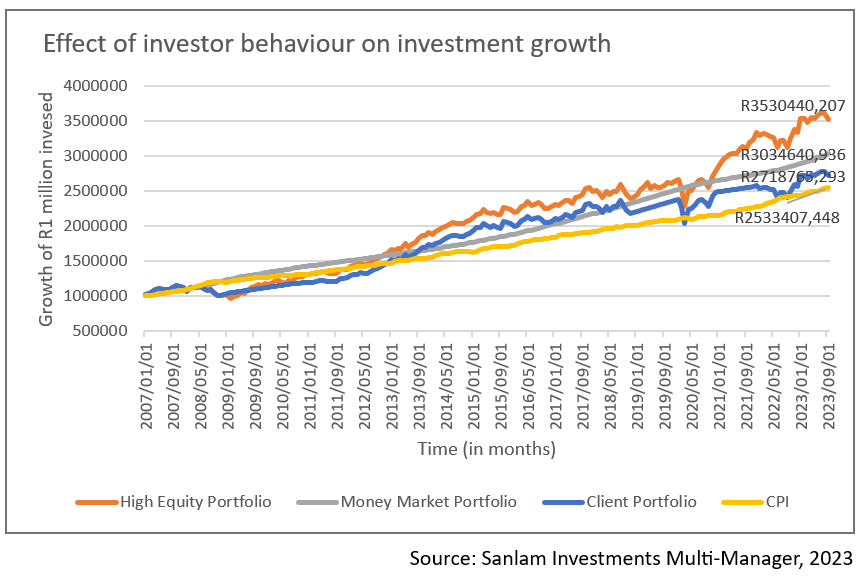History has shown that the discipline that comes with staying the course is not linear. During times of market volatility, investors are prone to either withdraw funds or switch to more conservative investment options to protect their capital after experiencing a period of unexpected weak performance. This is a response to short-term gratification. While downturns do not align with life events aligned to financial planning objectives, deviating from an investment plan solely based on short-term volatility has costly implications for long-term investment goals. Markets tend to recover strongly from market downturns, and sometimes recover long before the worst occurs. Consequently, investors attempt to time this recovery and further erode investment returns by failing to switch timeously.
It is important to understand the reasons that contribute to this short-term behaviour. Global central banks made coordinated efforts to cut interest rates and provide significant liquidity in response to the dire pause in economic activity during the COVID-19 pandemic. However, as economies reopened, many investors regained confidence in financial markets and switched their portfolios back to growth assets. This optimism was short-lived as the inflationary effects of the liquidity provided during the pandemic started filtering throughout global economies. Inflation was further accelerated by resilient consumer spending and a rush to travel after an extended period of lockdown. While the COVID-19 pandemic was an outlier event, the risks it brought were not any different to risks observed in other market events. As another example, the ongoing Russia-Ukraine war amplified an already high inflation environment in many countries and significantly increased energy costs, while simultaneously increasing geopolitical risk and adding pressure to investors and the ordinary consumer.
Despite this backdrop, central banks still made coordinated efforts to raise interest rates in aggressive increments to increase the cost of borrowing and bring inflation to its respective targets. Undoubtedly, these short-term factors created strong motivation for many investors to lose sight of the long-term goals agreed upon in their investment plans.
Still, the basic rules of investing apply when trying to achieve long-term goals: (i) ensure that your portfolio is appropriately diversified and (ii) stay the course. Generally, effort is inversely related to results in investing. Doing more, vis-a-vis switching between funds to avoid risk, for example, does not necessarily guarantee better results. In fact, doing more is often damaging to your investment performance while doing less or doing nothing at all is generally the prudent way forward for most investors.


The graph above illustrates the investment growth of three scenarios for an investor who invested R1 000 000 at the beginning of 2007. The first scenario assumes that the investor remained invested in a typical high-equity fund (balanced fund) from January 2007 until September 2023. The second scenario assumes that the investor remained invested in a typical money-market fund for the same duration. The third scenario illustrates an investor who tried to time the market by switching between the funds during times of market stress. The switches are a reaction to the weak returns observed during the global financial crisis of 2008, the COVID-19 pandemic, and the Russia-Ukraine war. The graph reiterates that the benefit of compounding is amplified through staying the course and that switching between funds, in fact, erodes this benefit. Because the investor would have switched after experiencing poor performance, they would increase the risk of buying high and selling low.
Investors who remain invested for the long term, through market volatility and times of uncertainty, have been shown to reap better returns than those who moved their investments to cash. Staying invested gives investors the opportunity to grow their capital over the longer term and enhances their likelihood of earning solid returns.
A few key considerations during emotional volatility:
- Embrace volatility as it is fundamental to the world of investing and growing your investment over the longer term
- If you try to time the markets, you’re at risk of losing out
- Whether you switch from equities to cash or within equity categories, losses will be made if you choose not to stay invested
Staying the course and remaining invested during times of stress enhances your likelihood of achieving your financial goals long after the sentiment has changed. “Volatility transfers wealth from those who can’t handle it to those who can.” – Brian Feroldi